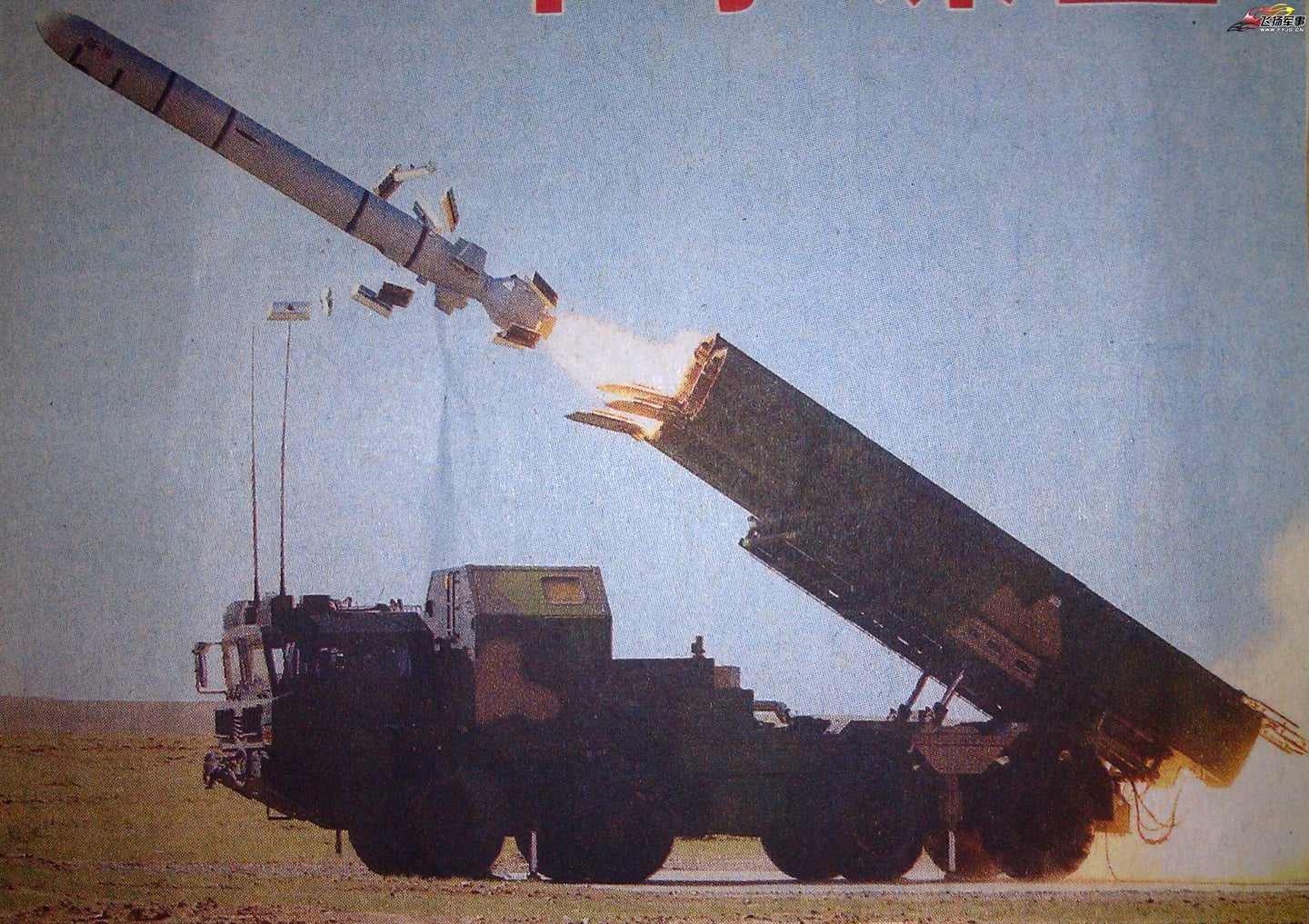China Shows Off Its Deadly New Cruise Missiles
DH-10 for a speedy 1100-pound delivery

A DH-10 land attack cruise missile (LACM) launches out of its canister, heading for parts unknown. Weighing about 1-1.5 tons (about the same size as the American Tomahawk cruise missile), it can be launched from land on a three missile transport erector launch (TEL) vehicle, as shown here. Shortly after ejection from the canister, the DH-10’s two retractable wings, four tailfins and belly mounted engine air intake will all unfold as it flies as far as 2,500km away. Reportedly able to hit a garage-door-sized target, in addition to carrying a 1100-pound high explosive warhead toward a target with accuracy, the DH-10’s payload can either be a high explosive warhead or submunitions for attacking fighters on runways and tank columns, nuclear warheads and fuel air explosives. Notably, DH-10s use several guidance modes, including satellite navigation, inertial navigation, and terrain following, making it hard to jam or deceive.

DH-10 at rest
Despite all the attention lavished on Chinese ballistic missiles like the DF-15 and DF-21, its cruise missiles are some of the most flexible, stealthy and deadly weapons that the PLA has at its disposal. Cruise missiles have several advantages over ballistic missiles; they can be updated during flight on battlefield changes, their low flight altitude makes them very stealthy against air defense radars, and fuel efficient turbofan engines allow cruise missiles to be lighter and cheaper than their ballistic counterparts.

DH-10 on Parade
The DH-10 was first displayed in public during the 2009 National Day Parade, China is estimated to have at least several hundred DH-10 cruise missiles. The flexibility of the DH-10 is its greatest strength. The 1550 mile-ranged H-6K bomber can carry 7 KD-20s (the DH-10’s air launched variant), giving the PLAAF the ability to reach Pacific targets distant as Hawaii. The Type 052D guided missile destroyer and Type 093A nuclear attack submarines can carry DH-10s in their vertical launch systems; sea-launched DH-10s can cover over 90 percent of all global land mass. The next generation of this family will be the YJ-100, a proposed DH-10 anti-ship variant that will have an onboard radar and 800km range, potentially China’s answer to the U.S. Long Range Anti-ship Missile.

Air Delivery
More broadly, future Chinese cruise missiles are likely to branch off into two families, one optimized for stealth, and the other focused on hypersonic flight. China is already investing large amounts of money into hypersonic engines and stealth technology; stealthy cruise missiles would be used to achieve operational surprise while hypersonic missiles would run past heavy enemy defenses. Other advancements would likely include electromagnetic attack technology, datalinks and distributed sensors/networks and improved AI to autonomously hunt targets in denied environments.
You may also be interested in:
The Missiles of Zhuhai: China Displays New Strike Arsenal
Want to Know What it Feels Like to be Blown up by a Chinese Missile? Ask This Ship.
SY-400 Guided Rocket Makes TV Debut
Hypersonic Gliders, Ramjets and Even Faster Things Coming to China’s Military